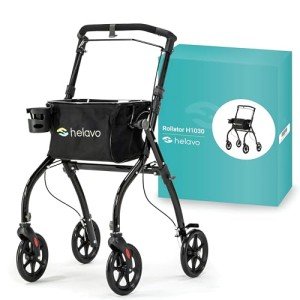Understanding Transport Walkers: A Comprehensive Guide
Transport walkers are important mobility aids developed to enhance the self-reliance and security of people, especially the elderly and those with mobility difficulties. Integrating the functionality of a walker with the convenience of a seat, these gadgets enable users to preserve their mobility while supplying a resting alternative whenever needed. In this post, we explore the features, benefits, types, and maintenance of transport walkers, in addition to regularly asked concerns to equip readers with vital knowledge.
What is a Transport Walker?
Transport walkers are mobility devices geared up with wheels created for people with mobility difficulties. Unlike standard walkers, which require users to raise them somewhat to move, transport walkers feature wheels that help with rolling. They generally consist of a seat, handlebars for stability, and a storage basket for personal products.
Secret Features of Transport Walkers
- Wheeled Base: The rolling wheels permit easy motion, reducing the stress on the user.
- Foldable Design: Most transport walkers can be quickly folded for storage or transport.
- Comfortable Seating: A padded seat is generally incorporated, supplying users a location to rest.
- Hand Brakes: Designed for security, most walkers come with hand brakes that allow users to control their speed and maintain stability.
- Storage Options: An integrated basket or pouch at the front enables users to bring individual products without the need for extra bags.
Advantages of Using Transport Walkers
Transport walkers use numerous benefits that deal with the needs of various users:
1. Increased Mobility
Transport walkers allow people to navigate their areas more freely. They are especially helpful for those recovering from surgical treatment or handling chronic health issues.
2. Safety and Stability
With a sturdy frame and encouraging handlebars, transport walkers offer stability, reducing the threat of falls and mishaps.
3. Resting Capability
The seating option provides users an opportunity to rest throughout extended getaways, which is important for those who might tire easily.
4. Easy Maneuverability
Transport walkers are lightweight and designed for smooth movement, making them easy to use both inside your home and outdoors.
5. Self-reliance
By utilizing transport walkers, people can take part in activities without relying heavily on caretakers, therefore improving their self-reliance and quality of life.
Kinds Of Transport Walkers
When considering a transport walker, it's essential to recognize the different types offered:
| Type | Description |
|---|---|
| Requirement Transport Walker | Basic model with four wheels and a seat. |
| Transport Wheelchair | Combines the functions of a walker and a wheelchair. Can be pressed by a caregiver. |
| Heavy-Duty Transport Walker | Designed for bigger users, providing additional stability and weight capability. |
| Two-Wheel Walker | Features 2 wheels at the front and 2 back legs, enabling better balance. |
| Reclining Walker | Supplies adjustable seating for convenience, targeting users with special requirements. |
How to Choose the Right Transport Walker
Elements to Consider:
- User's Height: Ensure that the walker is adjustable to the user's height for ideal comfort and security.
- Weight Capacity: Check the walker's weight limit to ensure it can accommodate the user.
- Planned Use: Determine if the walker will be utilized mostly indoors, outdoors, or both.
- Storage Features: Evaluate the benefit of storage options readily available with the walker.
- Transportability: If regular transport of the walker is necessary, consider its weight and how easily it can be folded.
Upkeep Tips for Transport Walkers
To extend the life and efficiency of a transport walker, follow these maintenance tips:
- Regular Cleaning: Wipe down the frame and seat with a moist cloth to get rid of dirt and spots.
- Inspect the Wheels: Ensure the wheels are rolling efficiently; lubricate if essential.
- Check Brakes: Regularly examine that hand brakes work effectively for included security.
- Tighten Bolts and Screws: Periodically check and tighten up any loose components.
- Replace Parts As Needed: If wheels or footrests show indications of wear, consider replacing them for optimal safety.
Regularly Asked Questions (FAQs)
1. Who can gain from a transport walker?
Transport walkers are perfect for older adults, people recuperating from surgical treatments, and those with conditions such as arthritis, stroke, or balance issues.
2. Are transport walkers appropriate for outdoor usage?
Yes, lots of transport walkers are designed with durable materials and wheels that can handle outdoor terrain, although it's best to inspect maker requirements.
3. Just how much weight can a transport walker typically manage?
Many transport walkers have weight capacities ranging from 250 to 400 pounds, depending upon the brand name and model.
4. Do I require a prescription to acquire a transport walker?
While a prescription is not normally required to buy a transport walker, talking to a doctor can assist in picking the right walker for particular requirements.
5. Can transport walkers be utilized by individuals with minimal upper body strength?
Yes, many models are designed with features that provide stability and make them easier to use for people with minimal upper body strength.
Transport walkers are vital help that promote independence, security, and mobility for people with mobility difficulties. By understanding their features, benefits, and maintenance, users can select the right walker to fit their lifestyle. Buying Durable Walker can make a significant difference in boosting one's lifestyle, making day-to-day activities more manageable. Whether used for brief errands or longer excursions, a transport walker offers the support and self-confidence required to navigate the world.

